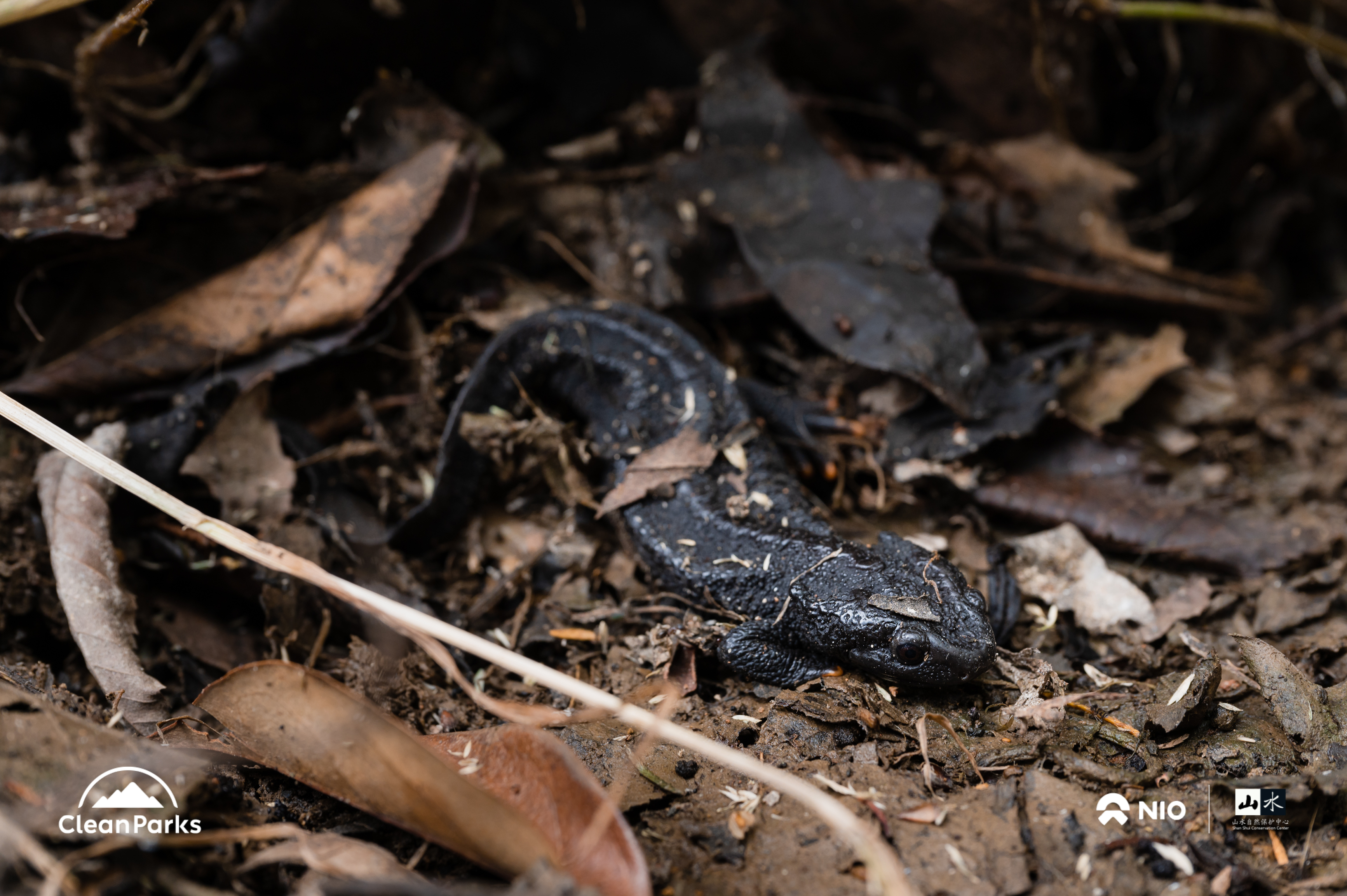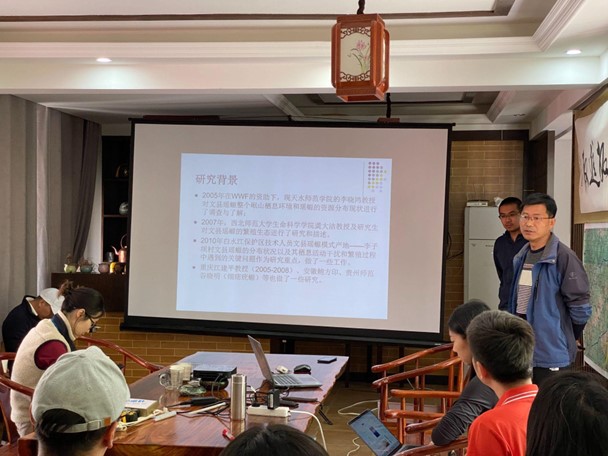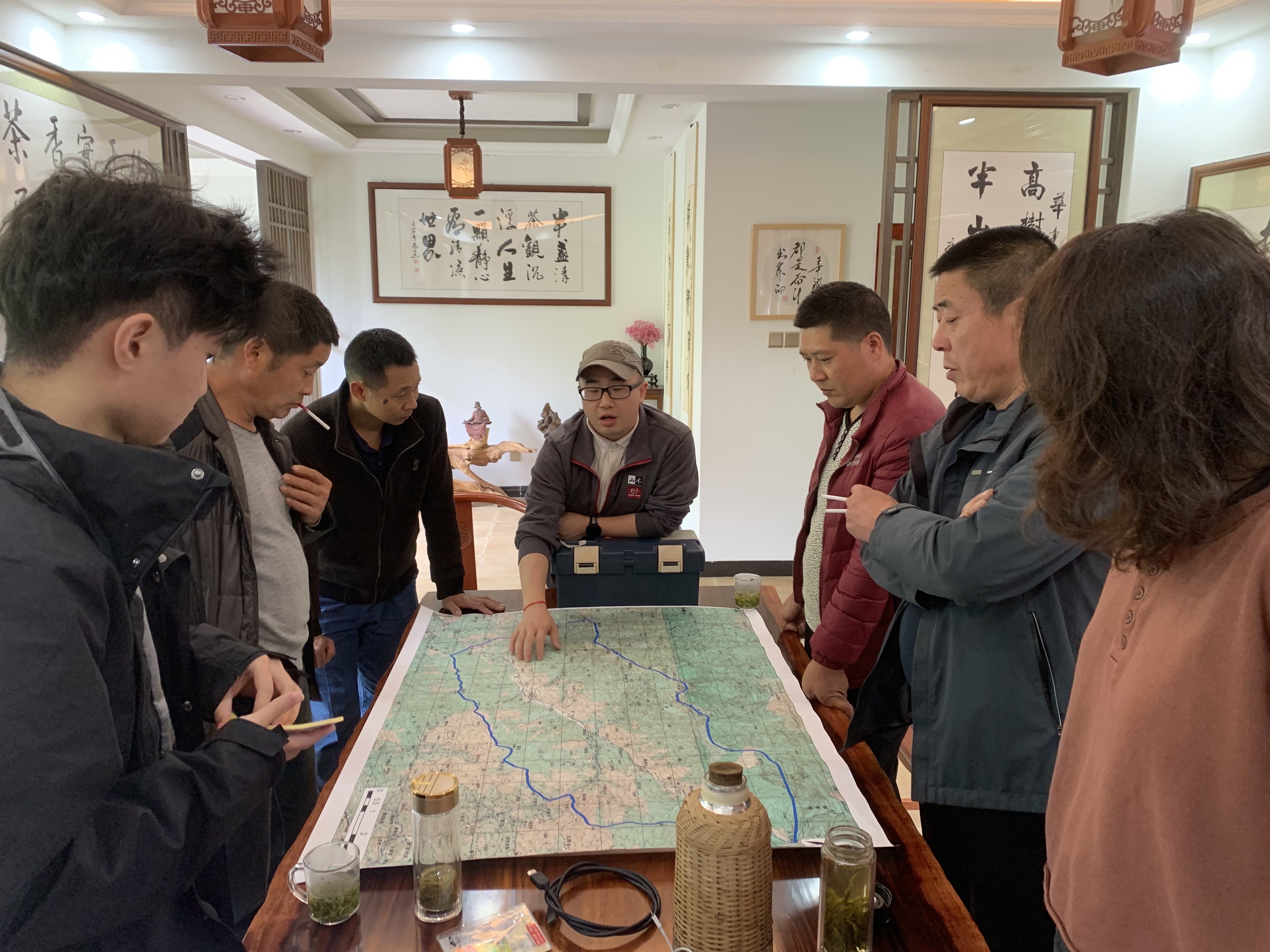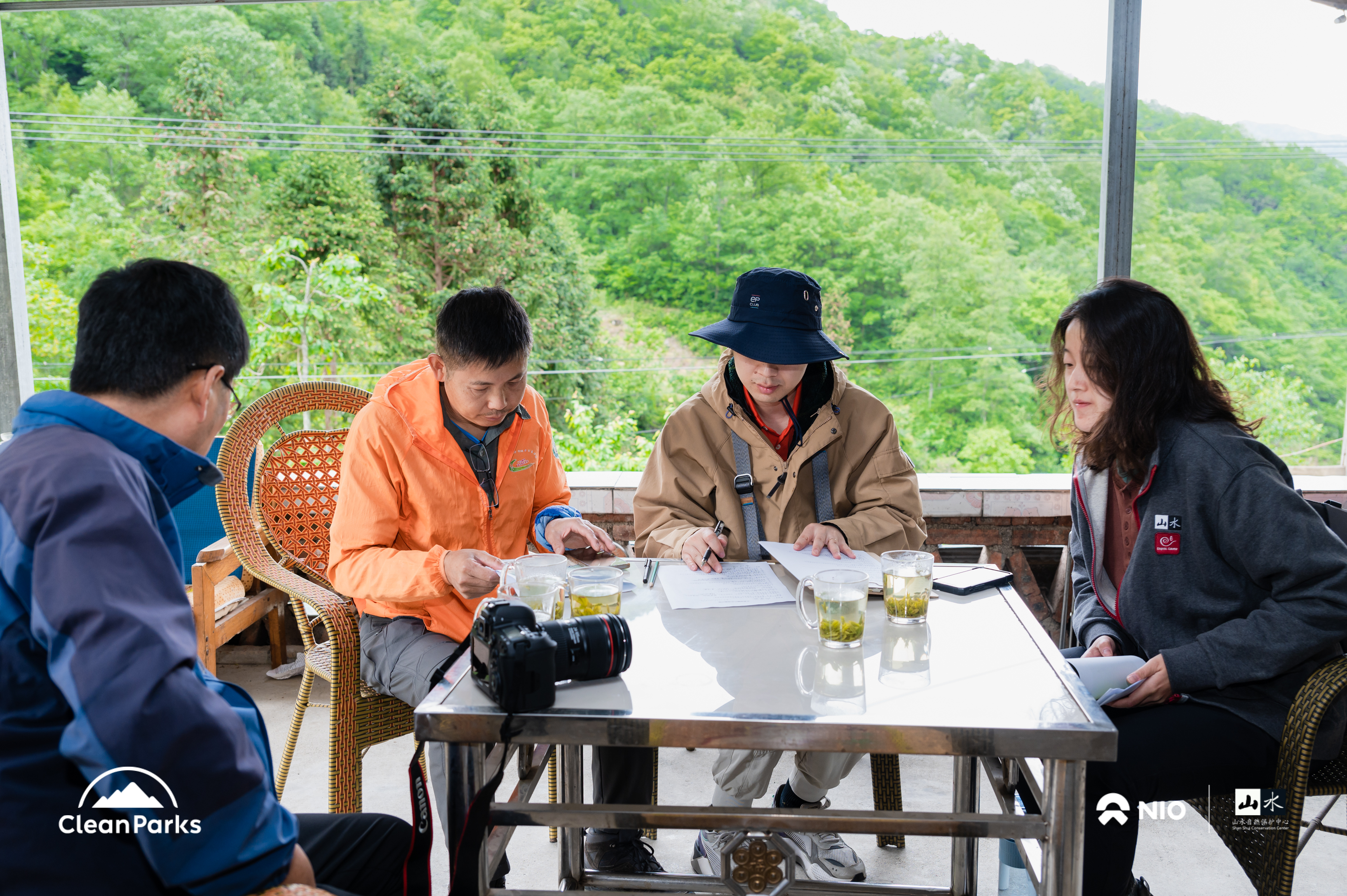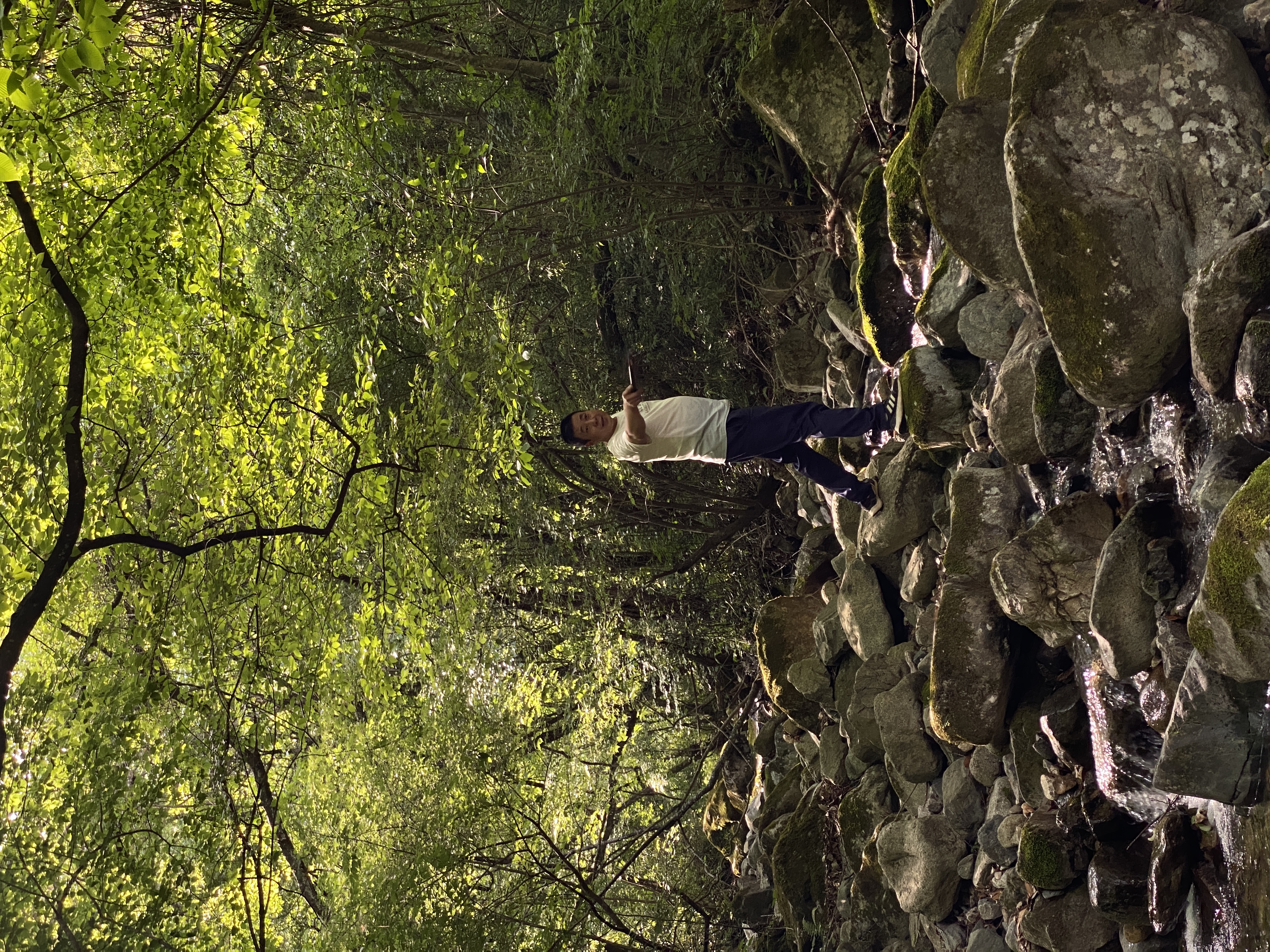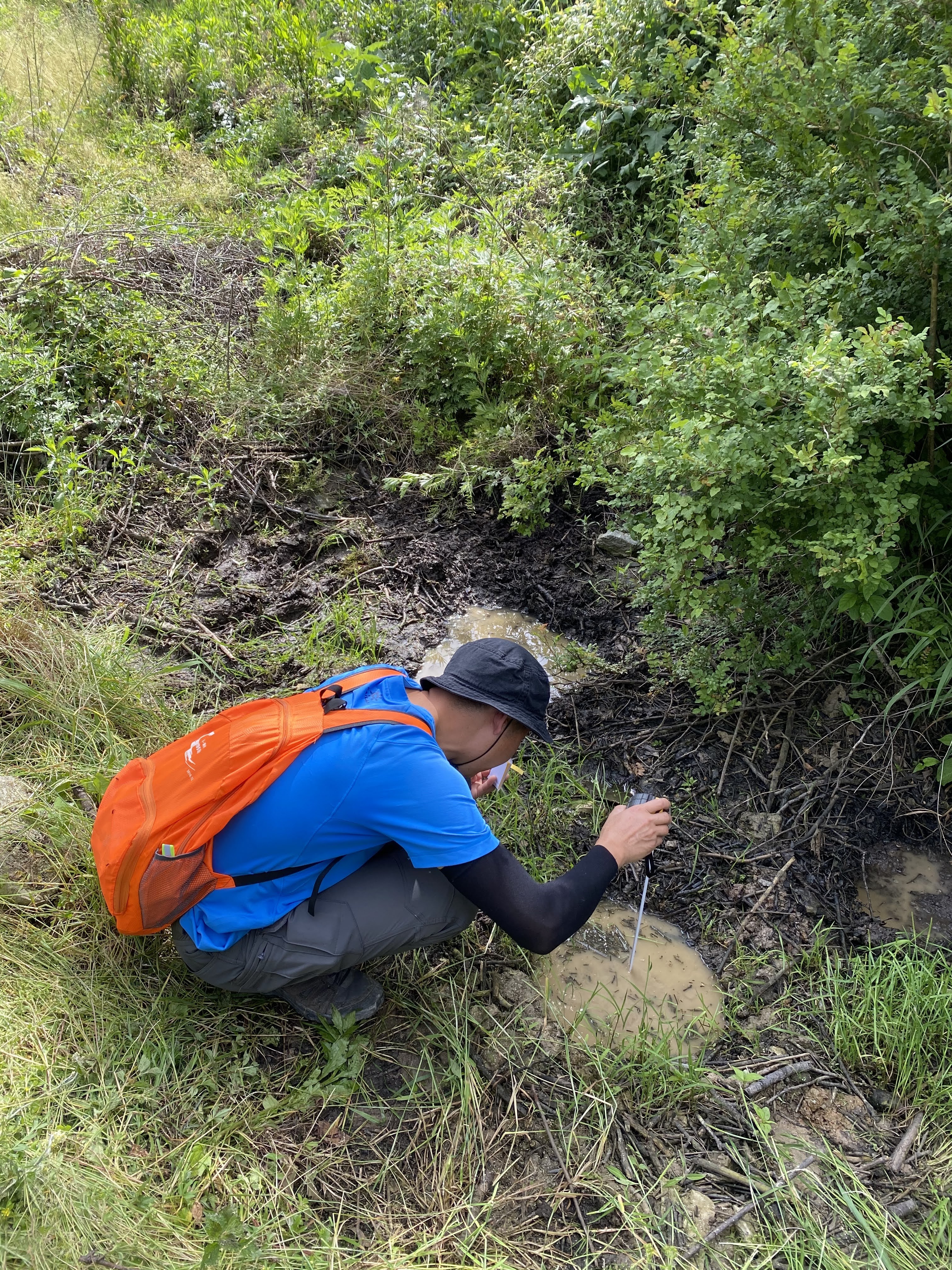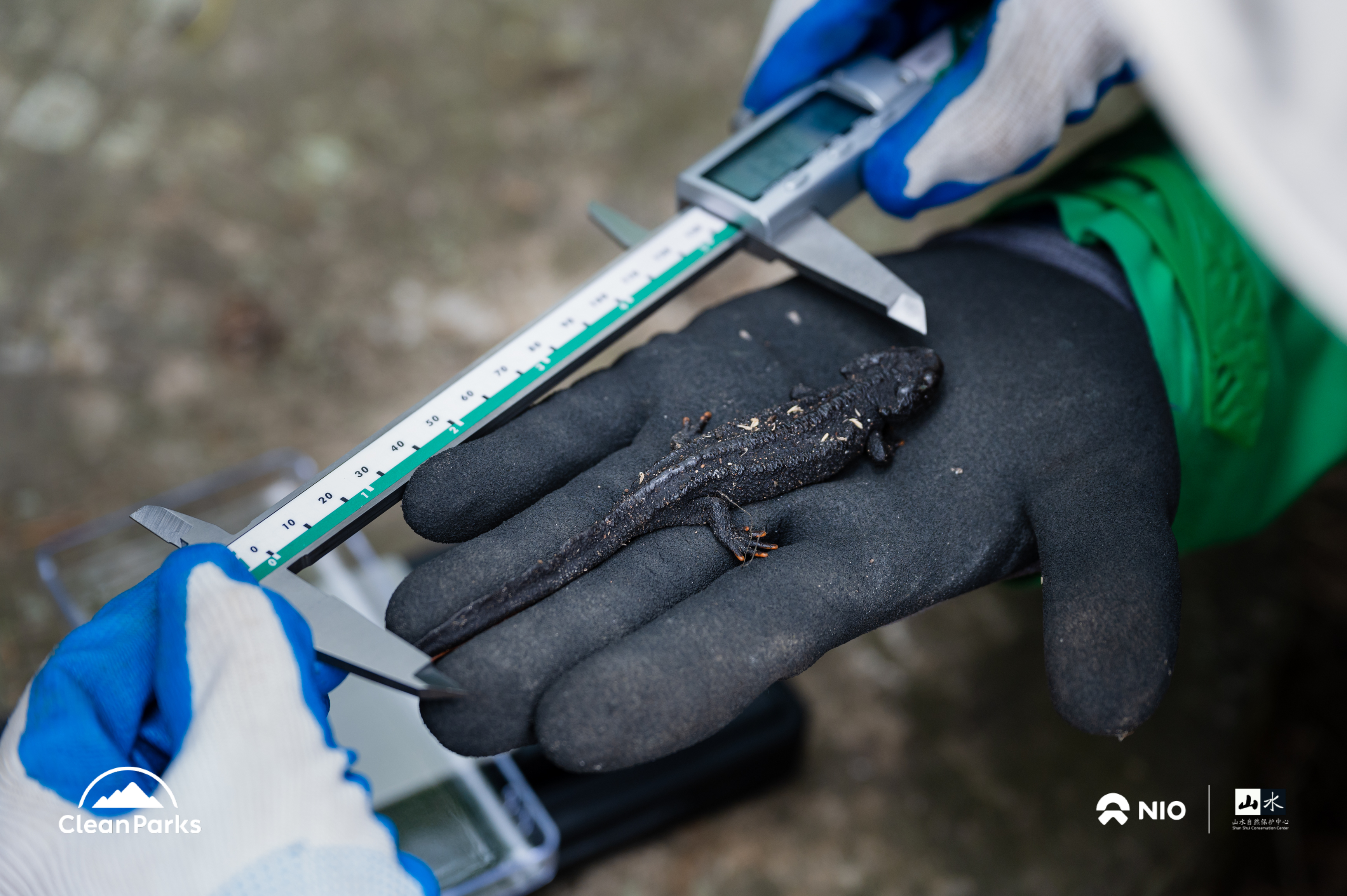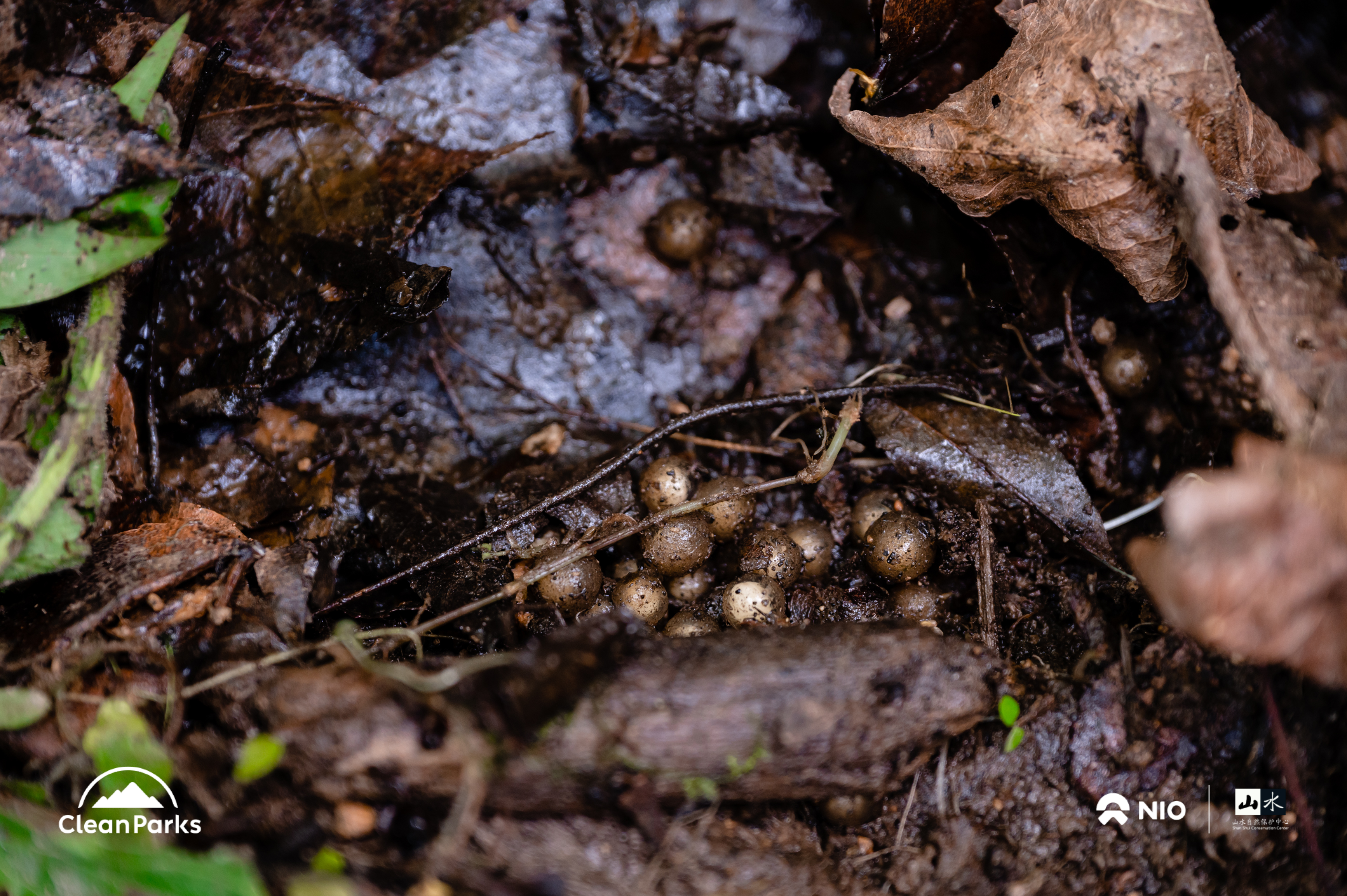Citizen scientists in China’s national parks: building a volunteering and public participation system
By Miranda Li
“Can we ask you a few questions about the Wenxian Knobby Salamander?” we asked, clipboards in hand, in the tea fields of Liziba Village in Wen County, Gansu Province. Our small team of four was surveying local residents’ knowledge about the Wenxian Knobby Salamander (Tylototriton wenxianensis), an IUCN Vulnerable, Chinese national class II protected species. Endemic to China, the salamander mainly lives in muddy stillwater ponds in forests near the border between Sichuan and Gansu provinces – right in the backyard of Liziba residents. In fact, it is named for the county that Liziba is in: Wen County.
Liziba Village (photo by Brother Ping )
Liziba Village is in the Baishuijiang Nature Reserve (白水江自然保护区) of Giant Panda National Park. The national park stretches across Sichuan, Gansu, and Shaanxi Provinces and not only protects wild Giant Panda habitat, but also protects the habitat of many other species including the Asiatic Black Bear, Takin, Tibetan Macaque, Yellow-throated Marten, Sichuan Snub-nosed Monkey, Tufted Deer, Chinese Goral, and our research subject this trip: the Wenxian Knobby Salamander.
Wenxian Knobby Salamander (photo by Brother Ping)
Creating a pilot volunteering program in a national park
Shan Shui hosts citizen science events regularly in Beijing and Shanghai, where the city conservation teams bring teams of local volunteers into parks near urban centers for both educational and scientific purposes. Moreover, as China builds up its national parks system, Shan Shui collaborates with several local villages to create opportunities for the public to enter national parks in a more in-depth manner than regular tourism.
This event in Liziba, held by Shan Shui and NIO’s Clean Parks Initiative, brought together twelve volunteers, along with staff from Shan Shui, NIO, Baishuijiang Nature Reserve, and six local guides, to participate in a scientific survey of the Wenxian Knobby Salamander in Giant Panda National Park. Through four days of surveying and identification, we contributed what we could to the sparse research and data on this rare salamander.
Researcher Teng from the Baishuijiang Nature Reserve explaining the history of research on the Wenxian Knobby Salamander during orientation (photo by Miranda Li)
On the first day, after an ice-breaker and orientation, our large team of staff and volunteers split into six smaller groups, each with at least two volunteers, one Shan Shui staff, and one local guide. Rangers and researchers from the Baishuijiang Nature Reserve, some of whom had been researching and observing this salamander for over a decade, floated between the small teams to provide guidance.
Shan Shui had worked in advance with local rangers to split Liziba into six different zones roughly by the village communities (社). Each of the six small teams was assigned to a different zone, based upon which community their local ranger was a part of. My group, team one, was comprised of local ranger 冉堂发 (“Ran Tangfa”, or “Brother Ran”), and volunteers 胡聪 (“Hu Cong”) and 维凯 (“Wei Kai”).
Shan Shui colleague Huang Jian working with local rangers to split Liziba Village into six zones, one to be covered by each team (photo by Zhi Shu-qi)
Each group had two main responsibilities. First, we surveyed the households in our assigned zone and asked where, when, and how frequently the village residents have seen the Wenxian Knobby Salamander; how they think the salamanders’ habitat and locations have changed over time; and their opinion about the protection status of the salamander. We then asked each resident to mark known stillwater ponds on a map.
Team one surveying local households (photo by Brother Ping)
Interviewing local residents in the tea field (photo by Miranda Li)
Second, based on the marked locations, we hiked to the ponds to search for the presence of the salamander. If found, we measured and recorded environmental variables including pond latitude and longitude, air temperature, terrain type, slope direction and degree, elevation, water temperature, water pH, pond area, and pond depth.
The local ranger in our group, Brother Ran, had the sharpest eye in searching for and assessing stillwater ponds. He had spent his childhood in the mountains of Liziba, and knew the locations of many of the ponds in his community, including those that used to have water but have since dried up.
Brother Ran leading our small team (photo by Miranda Li)
Hiking to search for stillwater ponds (photo by Brother Ping)
We also made a rough estimate of the number of adult individuals in the pond based on what we could see, noted if there were any larvae or eggs, and measured the body traits of one to three representative individuals, recording their sex, weight, head length, body length, tail length, mouth width, finger and toe length, and eye width.
Measuring pond depth (photo by Miranda Li)
Measuring salamander body traits (photo by Brother Ping)
The surveying process brought some unexpected circumstances. For example, team three encountered a celebratory feast that most of the residents in their community, and also some from the fourth team’s community, were attending. Team three “infiltrated” the party (with permission) and asked over 20 different people about their knowledge and opinions of the Wenxian Knobby Salamander – an exciting party conversation topic, I’m sure.
We were also surprised to find so many adults, larvae, and eggs in some of the ponds – more than researchers had previously expected – and adjusted our methods, taking extra precautions to ensure our measurements did not disturb them. Finding so many Wenxian Knobby Salamanders still living in the stillwater ponds around Liziba was a happy result.
Wenxian Knobby Salamander larvae (photo by Brother Ping)
Wenxian Knobby Salamander eggs (photo by Brother Ping)
Our survey and investigation raised many questions for further study, which we discussed together as a large group every night. For example, drought and inconsistent rainfall can lead a larger pond to fragment into two smaller ones, and eventually disappear. As the climate becomes drier in Liziba, how will that impact the salamander? To investigate this question, we need to understand the scope of movement of the salamander, the area they need for living and reproduction, as well as their ability to move to a different pond. Some residents we interviewed brought up the impact of the 2008 Sichuan earthquake, noticing that the salamander moved to lower elevations after the earthquake. However, others noted that this could also have been a result of climate change or the use of herbicides in farming, which can cause the soil to become drier.
In each small team, volunteers led the surveying and measurements, and enthusiastically discussed open questions and future research directions. Through the program, they got a more nuanced and in-depth understanding of Giant Panda National Park, the animals that make it their home, and our efforts to conserve it.
Concluding thoughts
Group photo (photo by Brother. Ping)
I was pleasantly surprised to see such an in-depth, scientific volunteering experience in Giant Panda National Park. It made me think about volunteering programs in national parks that I participated in growing up, like the US National Public Lands Day, a yearly event with over 500 volunteering opportunities like trail maintenance, surveying, planting, and trash cleanup in national parks and other public lands across the country. According to the National Environmental Education Foundation (NEEF), which started National Public Lands Day in collaboration with the US National Parks Service, in the past decade over one million volunteers have participated, donating almost five million hours of time, worth an estimated $133 million.
Volunteering brings the public into national parks and teaches people how to enjoy and protect the outdoors. One-day programs, as well as week-long and even season-long volunteering opportunities, create unique ways to make national parks accessible to the general public beyond tourism and outdoor activities. Visiting national parks has physical and mental health benefits, and can teach the public the importance of environmental protection.
Many outstanding questions still remain, however, in the process of creating volunteering and citizen science opportunities in China’s national parks and 49 national park candidate areas. Who gets to participate, and how can these programs be equitable and accessible for all? Who should be responsible for organizing them? How can National Parks Administrations, local government, and local organizations collaborate to grow volunteering programs in national parks sustainably, while not compromising on the quality of the programs and the quality of protection?
On our last night at Liziba, the local Party Secretary Ren spoke in depth about the history of conservation in Liziba. From establishing their first forest patrol team in 2003, to creating contracts preventing illegal deforestation, fishing, and harvesting, to winning awards for their community rangers and management programs, Liziba’s local village committee has put a tremendous amount of effort into protecting their beautiful environment. Local rangers pick up any trash they see, patrol the river every night to ward off illegal fishermen, and protect their homes with their actions and their hearts.
Huang Jian, a Shan Shui veteran, ended our final meeting with a comment that still resonates with me today: “When we first go to a place like Liziba, we assume we know very little. We listen to the local residents, and we learn from them. We support them in what they want to do, and our presence means they have the room to try new things, and maybe fail a few more times, before they succeed.”
Even though we don’t yet have an answer to many of the outstanding questions, I am hopeful that if volunteering programs are created with the same spirit of listening and collaboration, in the future there will be fun, educational, and accessible volunteering opportunities in China’s national parks for all.


